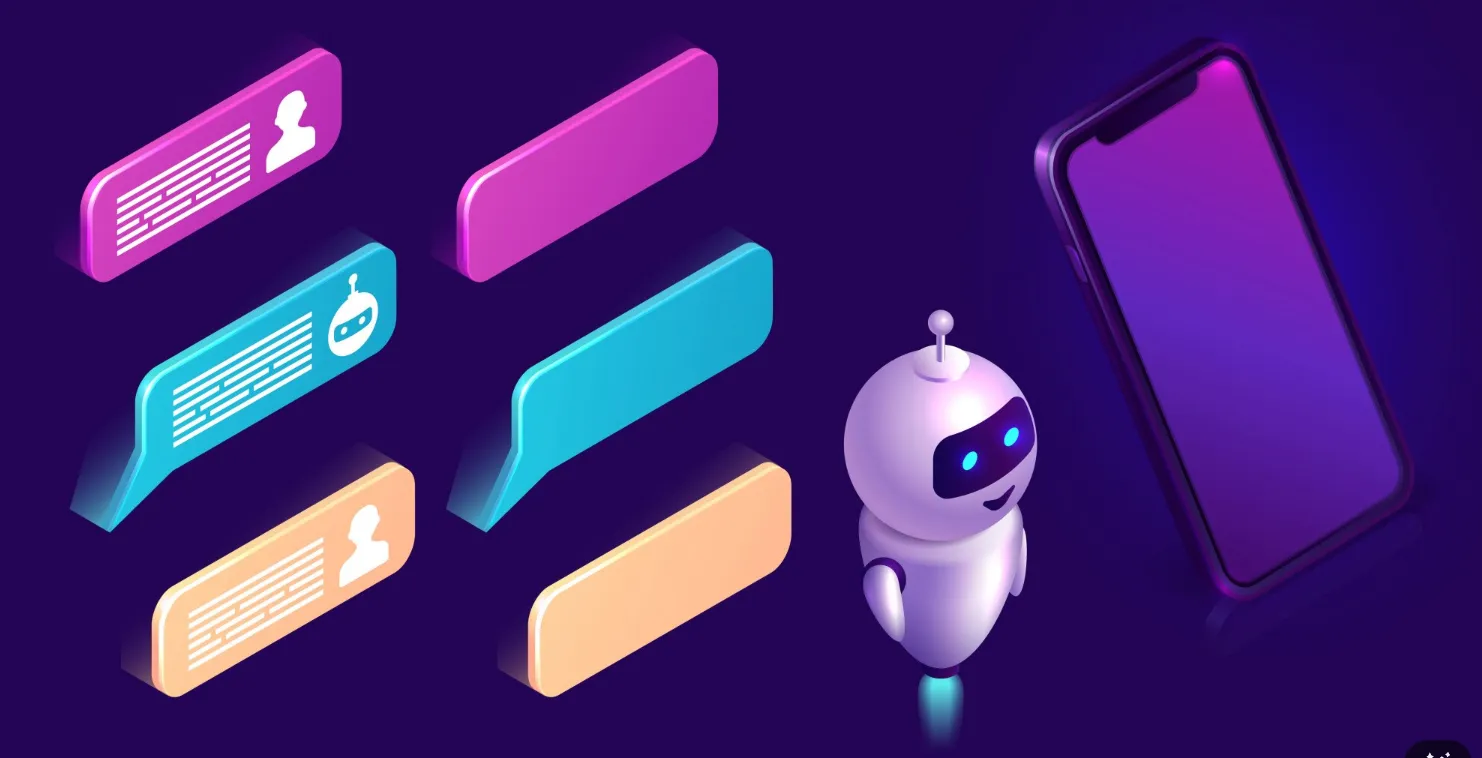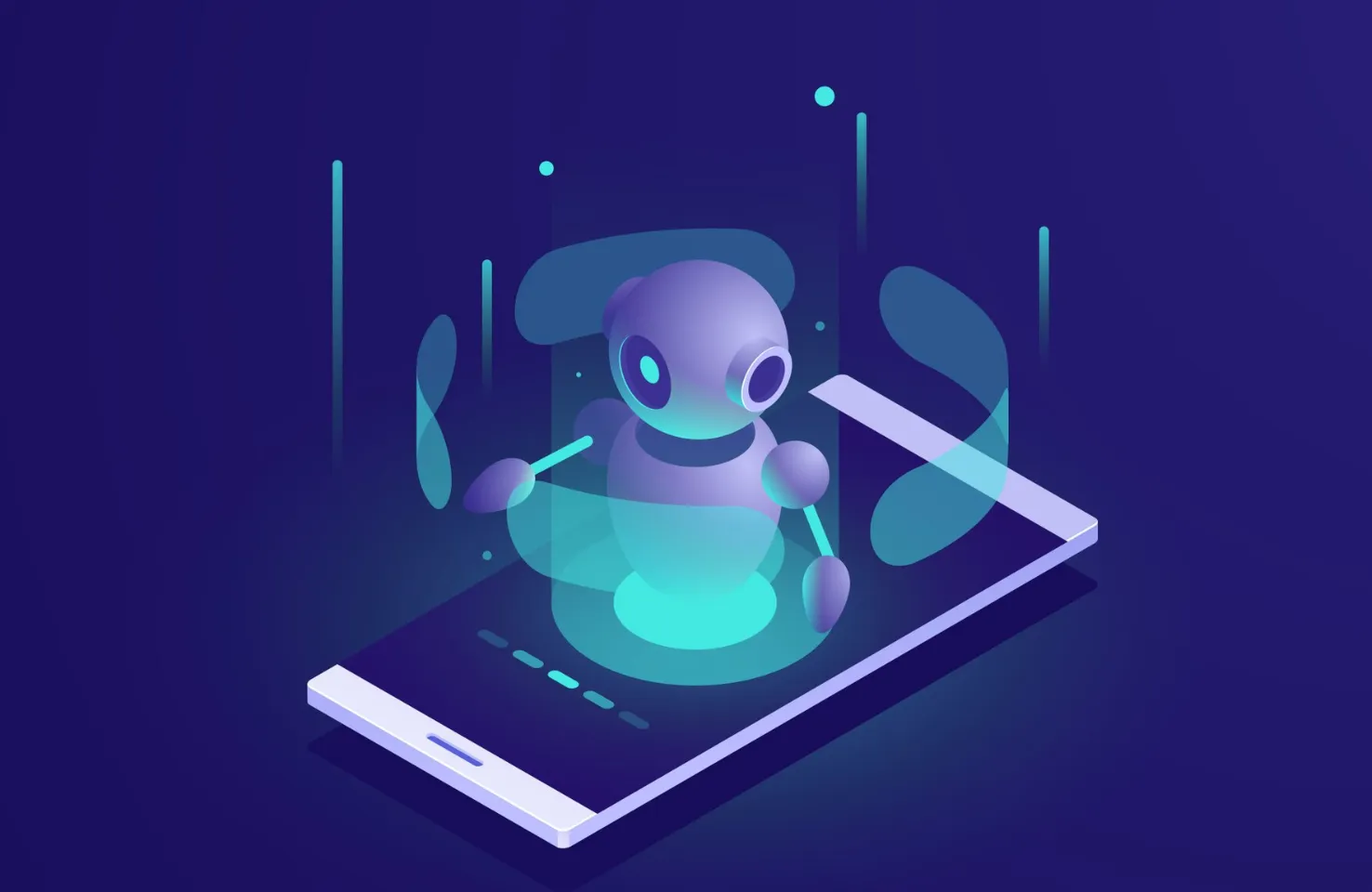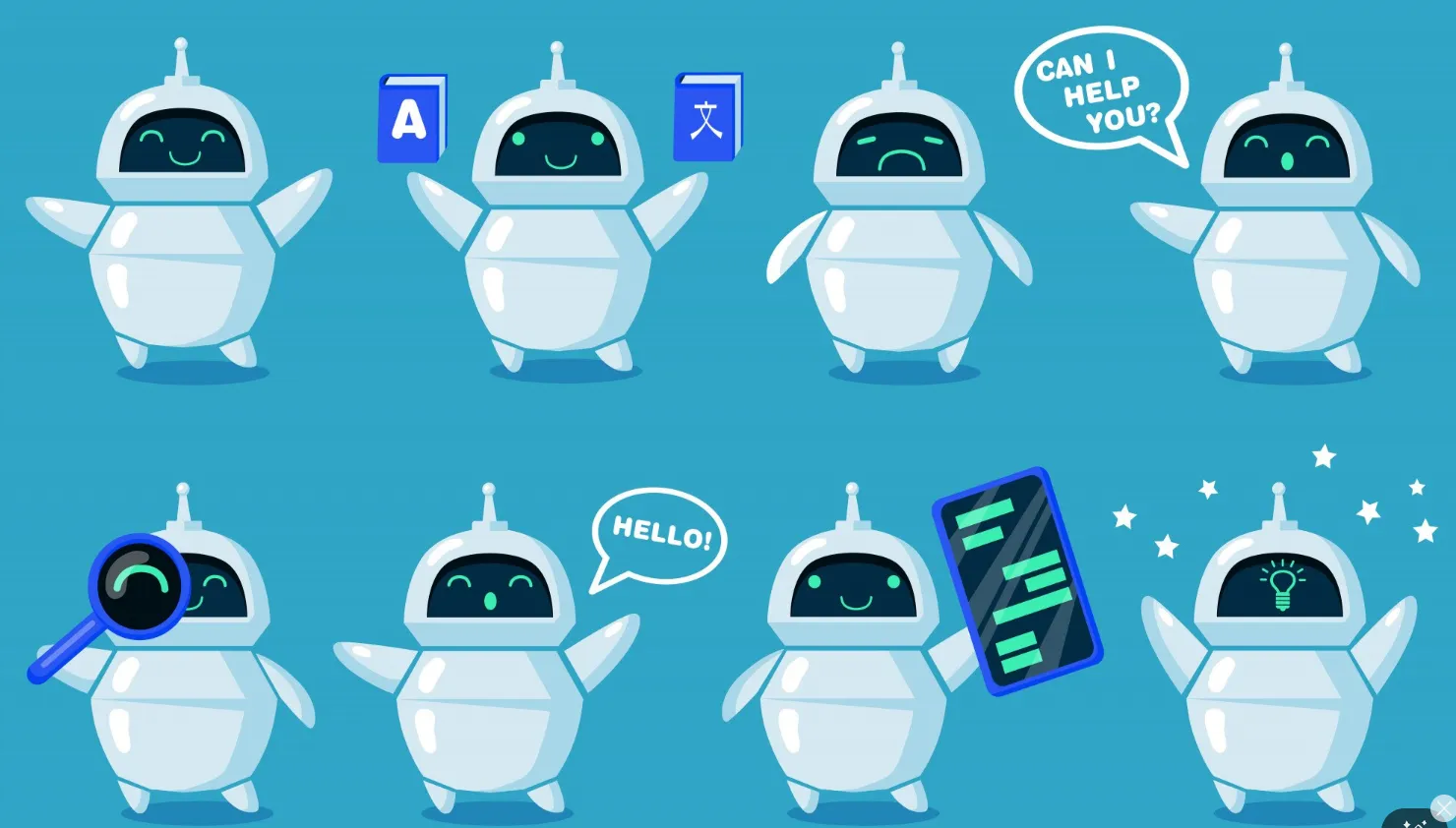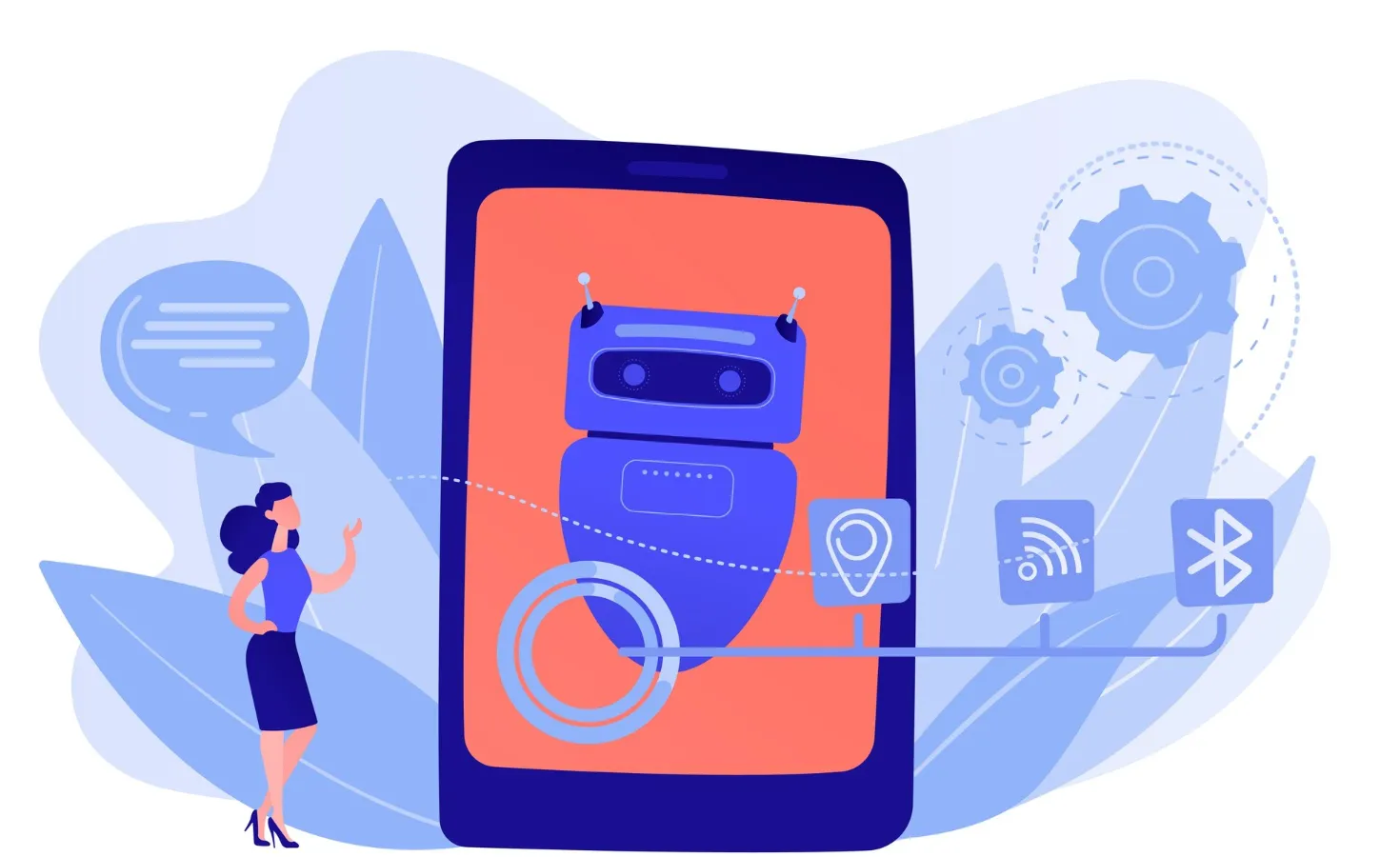
Chatbot is an artificial intelligence application that interacts with users in written or vocal form. Chatbots, which are generally used in areas such as customer service, sales, marketing and information, help businesses provide fast, efficient and low-cost solutions. These technologies, also called “chatbots”, focus on understanding user needs and producing meaningful answers, especially by utilizing modern techniques such as natural language processing (NLP) and artificial intelligence (AI).
The origins of chatbots date back to the 1960s. ELIZA, considered the first chatbot, responded to users’ questions based on certain rules. However, today this technology has reached a much more advanced level thanks to artificial intelligence and machine learning. Now chatbots not only answer questions, but can also make suggestions and offer personalized experiences by analyzing user behavior.
The popularity of this technology is directly related to the advantages it provides to businesses. Chatbots stand out with their ability to provide 24/7 service and multi-platform integration. For example, an e-commerce site can increase its sales by using a chatbot that offers shopping suggestions to customers. It can also reduce human errors and lower operational costs by automating customer support processes.
Equipped with a user-friendly interface, chatbots have become an indispensable tool for both small businesses and large companies. Regardless of the industry, this innovative solution offers a powerful way to improve customer interaction and make business processes more efficient. To better understand the extensive capabilities of chatbots, it is important to examine their types and how they work.
Types of Chatbots
Chatbot technology is divided into various types to meet the different needs of businesses. Each type has its own advantages and areas of use. Choosing the right type of chatbot plays an important role in achieving your business goals.
Rule-Based Chatbots
Rule-based chatbots work based on predetermined scenarios and rules. These chatbots provide appropriate responses when users use certain keywords or phrases. For example, a chatbot that will respond to the query “order status” on an e-commerce site will ask the user for the order number.
Their advantages include ease of use, low cost, and the ability to focus on specific topics. However, they can be limited when faced with complex or unforeseen questions.

AI-Powered Chatbots
AI-powered chatbots offer more complex interactions using natural language processing (NLP) and machine learning techniques. Such chatbots not only understand user questions, but also perform better over time thanks to their ability to continuously learn.
For example, a customer support chatbot can analyze users' problems and develop more personalized approaches to provide solutions. These chatbots stand out with their flexibility and increased user satisfaction. However, they are usually more costly because they require more advanced infrastructure.
Hybrid Models
Hybrid chatbots are a combination of rule-based and AI-powered systems. Such chatbots can quickly answer simple questions with a rule-based approach, while solving more complex problems with AI support.
For example, a hotel reservation chatbot can quickly complete standard reservation transactions, while deploying AI algorithms to evaluate users' special requests. Hybrid models are an ideal choice for many businesses due to their wide range of uses and flexibility.
The advantages and limitations of chatbot types should be evaluated depending on the needs of your business. While rule-based chatbots may be sufficient for simple transactions, if a more advanced and dynamic interaction is required, AI-supported or hybrid models should be preferred. In the next section, we will explore how these chatbots work and how they manage user interactions.
How Do Chatbots Work?
The working mechanism of chatbots focuses on responding to users quickly and effectively. This process usually consists of three basic stages: natural language processing (NLP), learning, and creating responses. Modern chatbots make these steps more efficient by using artificial intelligence and machine learning technologies.
1. Natural Language Processing (NLP)
Natural language processing is the basic technology that allows chatbots to understand users' input. Users' written or vocal expressions are first analyzed by algorithms. During this analysis, the chatbot answers the following questions:
- What is the user saying?
- What is the main purpose of this expression?
For example, when a customer asks, "When will my order arrive?", the chatbot understands that this question requests information about the order status. NLP decodes the context and keywords in user expressions, allowing the chatbot to create the correct answer.
2. Machine Learning and Deep Learning
AI-powered chatbots are constantly getting smarter with machine learning techniques. Machine learning allows the chatbot to learn from past interactions and provide better answers in the future.
Deep learning, on the other hand, increases the chatbot’s ability to make sense of things by offering a more complex approach. For example, if a customer has previously asked questions about returning a product, the chatbot can analyze this data and respond faster to future refund requests.
3. Creating Responses and Communication
Once the analysis is complete, the chatbot creates an appropriate response to the user’s question. This response can be a fixed text, a dynamic suggestion, or an action that directs the user to a support team.
A successful chatbot not only gives the right answer, but also presents its response in a user-friendly way. For example, instead of saying “Sorry, I can’t help you with that”, an approach like “I’m connecting to our support team to resolve this issue” positively impacts the user experience.
The working principles of chatbots are based on understanding user needs and responding quickly. Natural language processing, artificial intelligence and continuous learning capabilities make these systems indispensable for both businesses and customers. In the next section, we will examine in detail the areas in which chatbots are used and the opportunities they offer for businesses.

Chatbot Usage Areas
Chatbots are versatile tools that serve a wide range of different sectors. The ability to respond quickly and automate operational processes has made this technology attractive to many businesses. Businesses use chatbots in various areas to strengthen customer interactions and provide more effective solutions.
1. Customer Service
One of the most common areas where chatbots are used is customer service. They can instantly respond to frequently asked questions by customers, quickly perform simple transactions, and direct the customer to a support representative when necessary. For example, a bank's chatbot can provide customers with information about balance inquiries, credit card applications, or payment dates. In this way, both customer satisfaction increases and human-based support requests decrease.
2. Sales and Marketing
Chatbots are an effective tool for optimizing sales processes and supporting marketing campaigns. They can offer personalized product recommendations, share campaign information, and increase sales conversion rates by interacting with potential customers. For example, on an e-commerce site, a chatbot enriches the shopping experience by suggesting products that interest users. It can also quickly send discount and opportunity notifications to the user.
3. E-Commerce and Order Management
Chatbots are frequently used in the e-commerce sector to manage order tracking, product inquiry, and return processes. For example, when a customer wants to learn the status of their order, a chatbot can quickly provide this information. It can also prevent customer loss by making alternative suggestions for products that are out of stock.
4. Education and Consulting
In the education and consulting sector, chatbots are used to provide information to students or customers, create course programs, or answer frequently asked questions. Especially on online education platforms, chatbots contribute to the learning process by answering students' questions.
5. Health and Finance
In the healthcare sector, chatbots are used for tasks such as appointment scheduling, patient information, and preliminary diagnosis assistance. In the finance sector, chatbots facilitate transactions such as investment advice, budget planning, and loan applications. In these sectors, chatbots focus on securely processing users' sensitive information.
Advantages of Chatbots
Chatbots offer businesses significant advantages by providing speed and efficiency in the digital world. Their constant accessibility, reduced operational costs, and ability to personalize the user experience make this technology attractive. Thanks to chatbots, businesses can save both time and resources while responding to their customers' needs faster.
One of the most obvious advantages of chatbots is their ability to provide uninterrupted service 24/7. This makes a big difference, especially in sectors that require customer support. Chatbots, which can provide information to users even outside of working hours, increase customer satisfaction and minimize situations that require human intervention.
In addition, chatbots simplify operational processes and reduce manual workload. Frequently repeated transactions are quickly managed by chatbots. For example, on an e-commerce site, transactions such as order status queries, initiating a return process, or offering product suggestions are easily performed without the need for human intervention. This allows customer service teams to focus on more complex issues.
Another important benefit of chatbots is their ability to provide a personalized experience. AI-powered chatbots can analyze user behavior and offer suggestions tailored to needs. For example, a shopping site chatbot can review a user's previous purchases and suggest similar products. This both increases customer satisfaction and supports sales.

Finally, chatbots provide cost advantages. While it is not possible to serve hundreds of customers at the same time with human power, chatbots eliminate this problem. This means operational savings, especially for large-scale businesses. At the same time, the integration of chatbots is usually a fast and cost-effective process.
Chatbots are a powerful tool that helps businesses adapt to the competitive conditions of the modern world. Thanks to the constantly developing artificial intelligence technologies, these advantages are expected to expand even more in the future.
Best Chatbot Platforms: Global Successful Examples
Chatbot technology is effectively used in many sectors around the world and has proven itself with successful examples. Below, we will examine successful chatbot examples from around the world and discover how the use of chatbots can create transformative effects in different sectors.
1. Sephora - Smart Makeup Assistant
Sephora draws attention with its use of chatbots in the cosmetics sector. The company has achieved great success by developing the “Sephora Virtual Artist” chatbot, which makes recommendations to its customers about makeup products and makes recommendations according to different face types. Users can try on virtual makeup and get product recommendations through a chatbot. This chatbot personalizes the customer experience, allowing them to shop without having to go to the store. Sephora’s chatbot has both increased customer satisfaction and strengthened sales.
2. H&M - Fashion Consultant Chatbot
H&M has developed a chatbot that learns its users’ clothing preferences and offers them clothing recommendations. The chatbot analyzes customers’ shopping preferences, body measurements, and style to provide a personalized shopping experience. H&M’s chatbot has increased customer satisfaction, relieved the burden on brick-and-mortar stores, and supported online sales. Such personalized shopping experiences have helped the brand grow its loyal customer base.
3. National Geographic - Education and Information Chatbot
National Geographic has achieved great success by using chatbot technology for educational purposes. The chatbot, called “NatGeoBot,” allows users to learn about nature, animals, and scientific discoveries. Students and enthusiasts can use the bot to get answers to their instant questions and access interesting content. National Geographic’s chatbot has provided an educational experience that strengthens the brand image and encourages users to connect more deeply with the brand.
4. Domino’s Pizza – Order and Delivery Chatbot
Domino’s has one of the most effective examples of chatbot usage in the food ordering industry. The chatbot called “Dom” makes it easy for customers to order pizza. Users can order pizza and track the status of their orders with just a few clicks. Domino’s chatbot has greatly improved the company’s operational processes while allowing customers to make quick transactions. Such speed and efficiency has increased customer satisfaction and boosted Domino’s sales.
5. Bank of America - Erica Chatbot
The “Erica” chatbot developed by Bank of America stands out as a major innovation in the banking sector. Erica provides users with financial advice, provides information about account balances, makes payments, and tracks bills. Customers can perform banking transactions simply and quickly. The use of Erica has significantly improved the customer experience by facilitating access to banking services.
Conclusion
Chatbots have become an indispensable tool for businesses to improve customer relations, increase operational efficiency, and gain competitive advantage in today’s digital world. Successful examples from around the world clearly show how chatbot technology provides great benefits and adds value to businesses regardless of sector. Whether it is providing faster and more effective solutions in customer service or personalizing the user experience, choosing the right chatbot platform is an important strategic step for businesses. With the rapid development of technology, chatbots will continue to contribute to the digital transformation processes of businesses by providing even more powerful and effective solutions in the future. Therefore, investing in chatbot technology will be one of the keys to success in the business world of the future.
“Writing is seeing the future.” Paul Valéry


